A viewer of The Fun Accountant YouTube channel posed an important question that resonates with many small business owners: ‘Is there an easy way to mark an invoice as paid on a split bank transaction in Sage Accounting?’ This challenge, common in the process of managing bank receipts, is one that many encounter. Thankfully, there are practical solutions available.
The Allocate Receipt Challenge in Sage Accounting: A Closer Look
Let me show you:
To divide a single deposit between two customers is straightforward, but notice when you try to allocate the split receipt, nothing happens—this indicates that Sage Business Cloud Accounting does not permit this action directly. So, how do we overcome this?
Preparation is key ensuring the split amounts are ready.
It’s crucial to have the split amounts ready for each customer before starting.

Dividing a Bank Receipt for Two Customers in Sage Business Cloud Accounting
Start by selecting ‘Customer’ as the transaction type since these are receipts from customers. Then, you’ll choose one of the two customers and click on the split transaction icon.
All the fields will be populated automatically. However, you need to adjust the total amount in the ‘Inclusive’ field. This adjustment reflects the specific amount received from the first customer’s amount.
Upon opening the additional fields, you’ll notice there’s no option to match this receipt directly to an invoice. So, additional information on a receipt does not provide a solutions, so how do we navigate this challenge?
First, complete the allocation of the split transaction to the first customer. Then, select the second customer and allocate the remainder of the receipt to them.
Ensuring that the sum of the split amounts precisely aligns with the total deposit is paramount, resulting in a zero remainder. This verification step is crucial for ensuring balance and accuracy, a fundamental requirement set by Sage Business Cloud Accounting. It must be met before we can proceed with processing bank transactions within the system.
Once the amount has been fully split and allocated, there’s nothing more to do, you save this split bank receipt transaction.
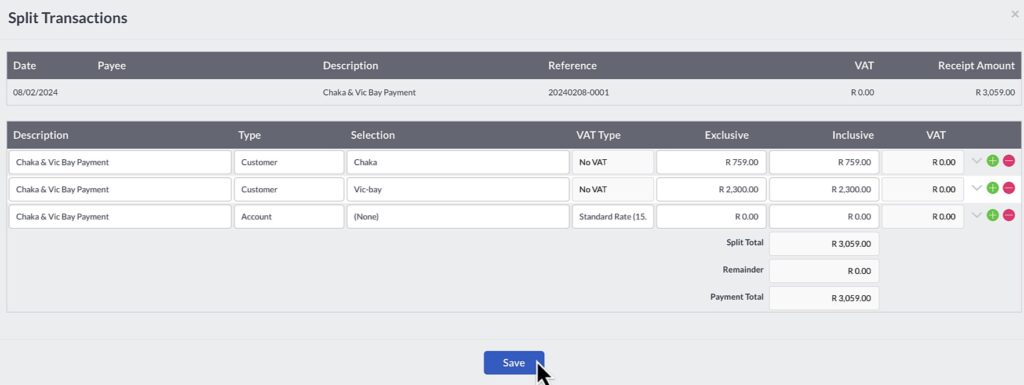
I will demonstrate two methods for allocating a split receipt transaction to an invoice, giving you the flexibility to choose the one that best suits your needs. These techniques will make managing this process much more straightforward.
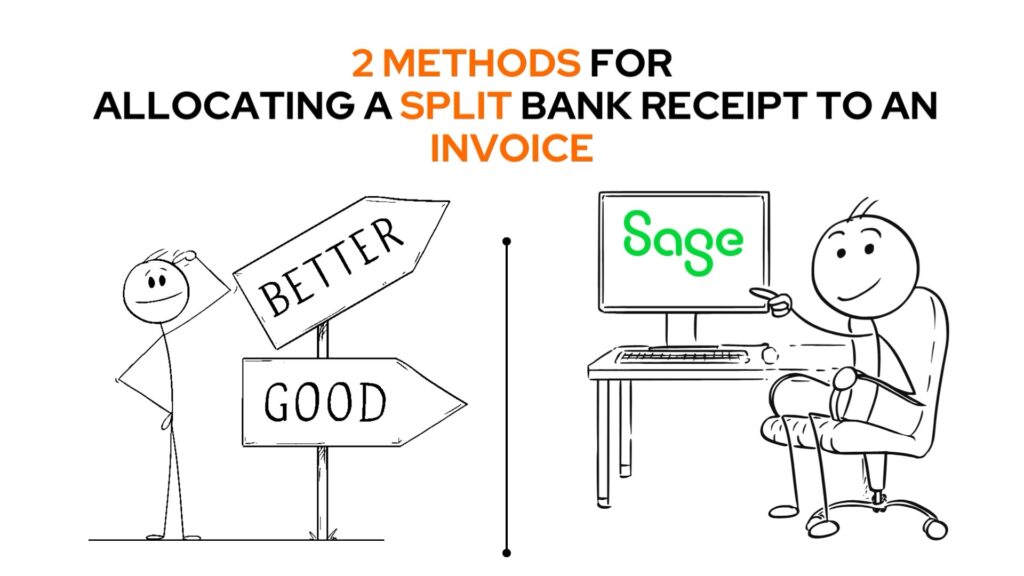
Method 1 Explained: Allocating a split bank receipt to customers
Method 1 works as follows:
- Navigate to the top menu and select ‘Customers.’
- Then, move down and choose ‘Allocate Receipts.’
- This action opens the Customer Allocation screen.
- Here, select the customer for whom you’re allocating receipts. Choose ‘Show Outstanding Only,’ a filter that displays all unmatched invoices alongside unmatched receipt amounts for that customer.
- On the left-hand side of the screen, you will see all the customer invoices that have not been matched with receipts,
- and on the right hand side, you will find all the receipts that have not been allocated to an invoice.
- You can match a receipt to an invoice by simply dragging the receipt over to the invoice. Notice how the balance due amount drops to zero.
- Once you are satisfied with the allocation, click ‘Save,’ and you’ll return to the customer receipt section.
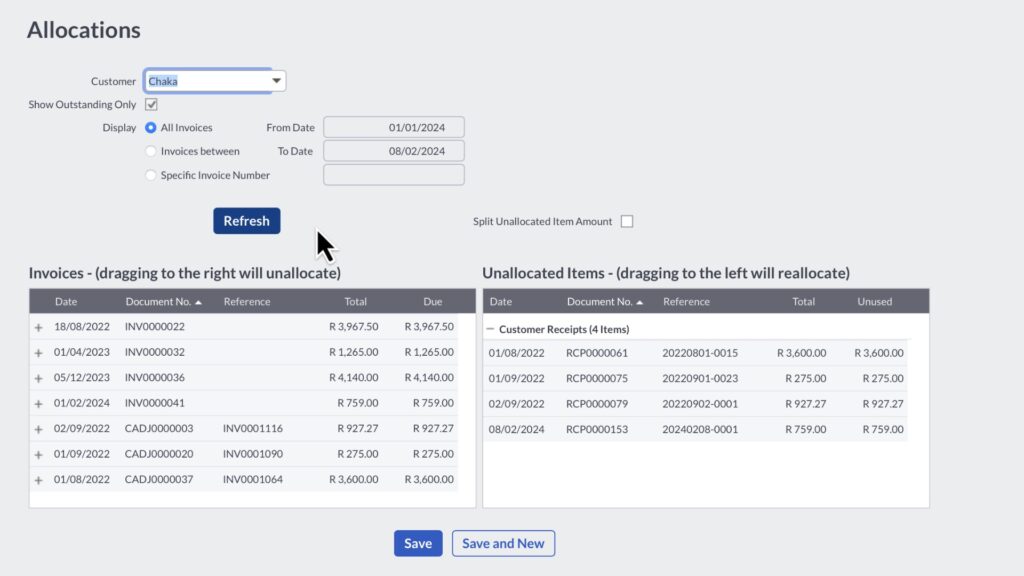
Method 2 Unveiled: A different approach to customer receipt allocations. From the bank receipts menu
Clicking on the blue Receipt Number located under the Doc Number heading;
This action will open the receipt you’ve recorded in the banking screen.
What’s helpful is that Sage displays both the receipt details and any unpaid invoices at the bottom section of the screen. This setup offers you the chance to allocate the split receipt directly to these invoices.
You can allocate the receipt by simply clicking the ‘Allocate’ tickbox next to the transaction line you wish to assign it to.
When you click the ‘Allocate’ tickbox, the ‘Unallocated’ amount at the bottom of the screen clears as soon as it’s ticked.
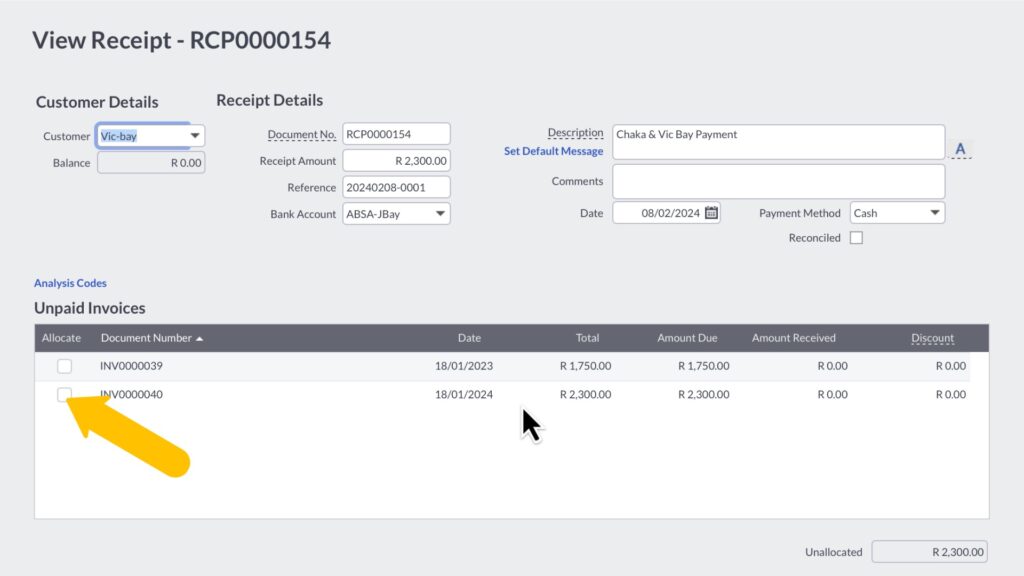
To complete the transaction, just press the ‘Process’ button.
How to verify if customer allocations have been done correctly
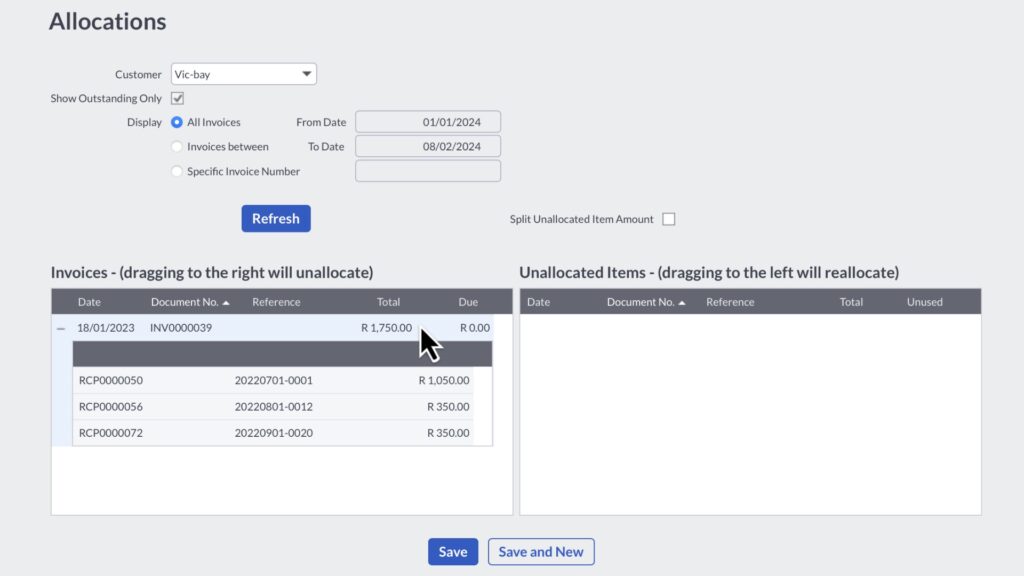
Let me show you how to verify if customer allocations have been done correctly, similar to what we did in method 1.
Start at the top by clicking the blue ‘Allocate Receipt’ button. In the customer field, select the particular customer. I normally keep the default settings intact to ensure all unallocated receipts are displayed, and then press ‘Refresh.'”
Once again, you’ll see invoices that haven’t been matched with deposits on the left, and the unallocated receipts are displayed on the right side of the box.
You match the receipts to the invoices by dragging the receipts to the invoices to match them. By the end of this process, there you should have no unallocated receipts left, unless the customer account is not fully settled.
You finalise the process by clicking ‘Save.
Sage handling the marking of customer invoices as paid on a split banking transaction
Sage successfully meets our expectations once more, by flawlessly handling the allocation of split banking receipt transactions.
I have shown you two possible methods for overcoming any difficulties of dealing with split transactions and marking them as paid to invoices that you can apply in your small business.

Back to Basics: Navigating to the Sage Accounting dashboard
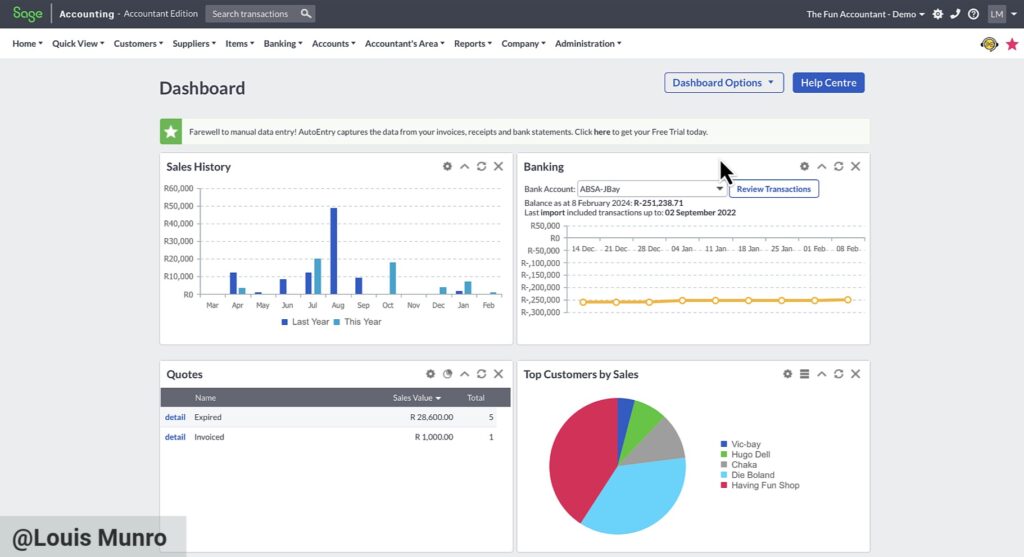
My usual practice is to return to the Sage Accounting Dashboard, where you can view a comprehensive snapshot of your business.
Your Free Trial
Kickstart your customer and banking management with a free 30-day trial of Sage Accounting, tailored for the Africa-Middle East region. It’s the perfect chance to see how it can simplify your small business’ accounting.










